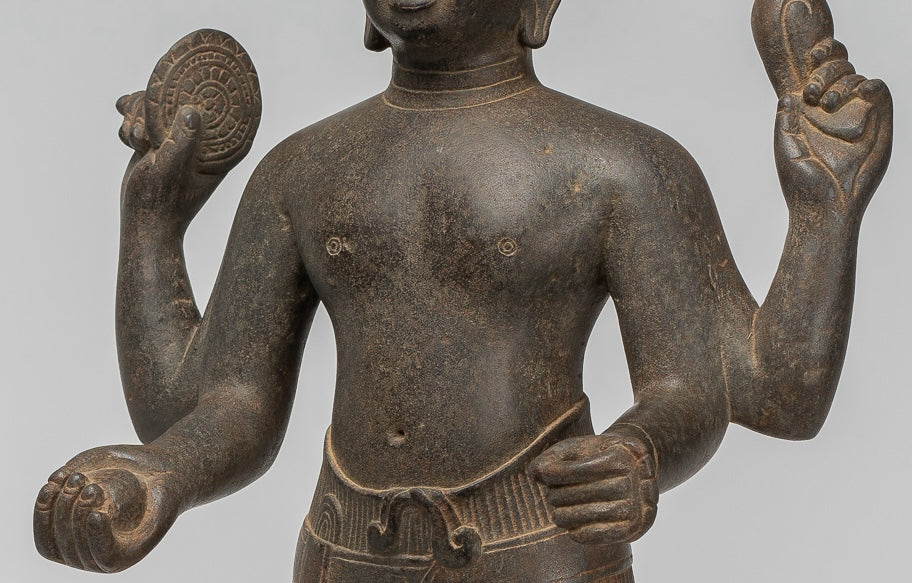
The Divine Radiance: Unveiling the Symbolism of a Vishnu Statue
Introduction
In the intricate tapestry of Hinduism, Lord Vishnu stands as a central and revered deity, presiding over the cosmic order and maintaining the balance of the universe. A statue of Vishnu is not merely a sculpted form but a profound representation of divine attributes, cosmic energies, and timeless symbolism.
In this blog post, we will unravel the layers of meaning encapsulated in a Vishnu statue, exploring the rich tapestry of spirituality, mythology, and cosmic balance that defines this benevolent deity.
-
The Preserver of the Universe: Lord Vishnu is often referred to as the "Preserver" in the Holy Trinity (Trimurti), alongside Brahma (the Creator) and Shiva (the Destroyer). The primary role of Vishnu is to maintain the cosmic order and preserve dharma (righteousness) by intervening in times of crisis and restoring balance.
-
Four Arms and Divine Attributes: A distinctive feature of a Vishnu statue is the representation of the deity with four arms. Each arm holds a symbolic attribute. The conch shell (shankha) represents the divine sound and the creation of cosmic vibration. The discus (chakra) symbolizes the eternal cycle of time and the cosmic order. The mace (gada) signifies mental and physical strength, and the lotus flower (padma) represents purity and transcendence.
-
Vishnu's Consort - Lakshmi: Vishnu is often depicted with his consort, the goddess Lakshmi, by his side. Lakshmi represents wealth, prosperity, and abundance. The divine union of Vishnu and Lakshmi symbolizes the harmonious balance between spiritual and material well-being.
-
Avatars of Vishnu: Lord Vishnu is believed to descend to the earthly realm in various incarnations or avatars to restore balance and protect dharma. The ten principal avatars, including Rama and Krishna, are celebrated for their teachings, heroic deeds, and contributions to cosmic harmony.
-
Ananta Shesha: Vishnu is sometimes depicted reclining on the cosmic serpent, Ananta Shesha, whose thousand hoods provide shelter to the god. This image represents the infinite cosmic ocean, and Vishnu resting on Ananta Shesha symbolizes the divine sustenance of the universe during the cosmic dissolution.
-
Padmanabha - The Lotus-Naveled One: Vishnu is sometimes referred to as Padmanabha, meaning "Lotus-Naveled." According to mythology, Brahma emerged from Vishnu's navel seated on a lotus flower. This symbolizes the creative force originating from the cosmic center.
-
Cosmic Harmony and Dharma: The overarching symbolism of a Vishnu statue revolves around cosmic harmony, order, and the preservation of dharma. Vishnu's divine attributes and mythical stories serve as a guide for devotees, emphasizing the importance of righteous living and the eternal balance that governs the universe.
Conclusion
A statue of Vishnu is a sacred embodiment of divine attributes, cosmic order, and spiritual principles. As the Preserver of the Universe, Vishnu's symbolism extends far beyond the artistic representation, inviting devotees to contemplate the profound cosmic dance that shapes the universe and the benevolent role of the divine in maintaining eternal balance.
In worshiping Vishnu, one finds inspiration not only for spiritual growth but also for leading a life in harmony with the cosmic order.


